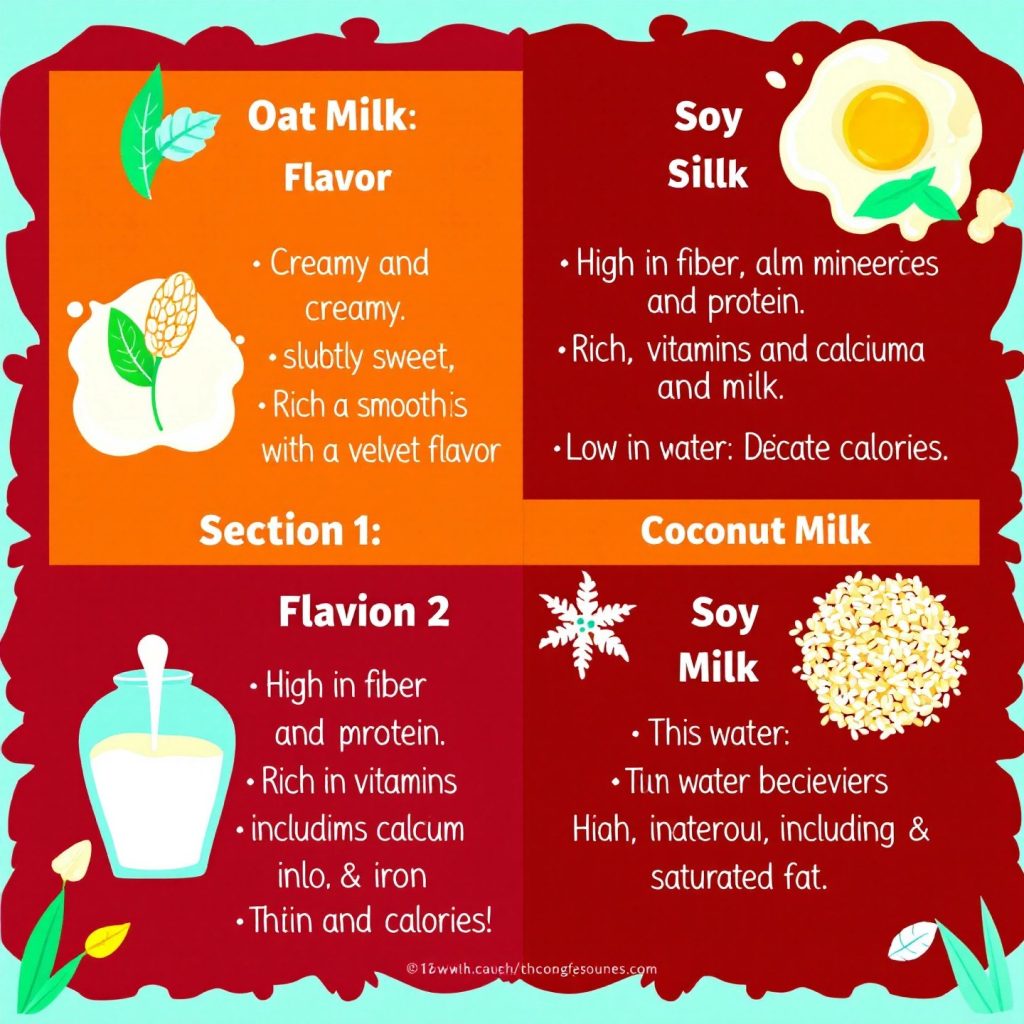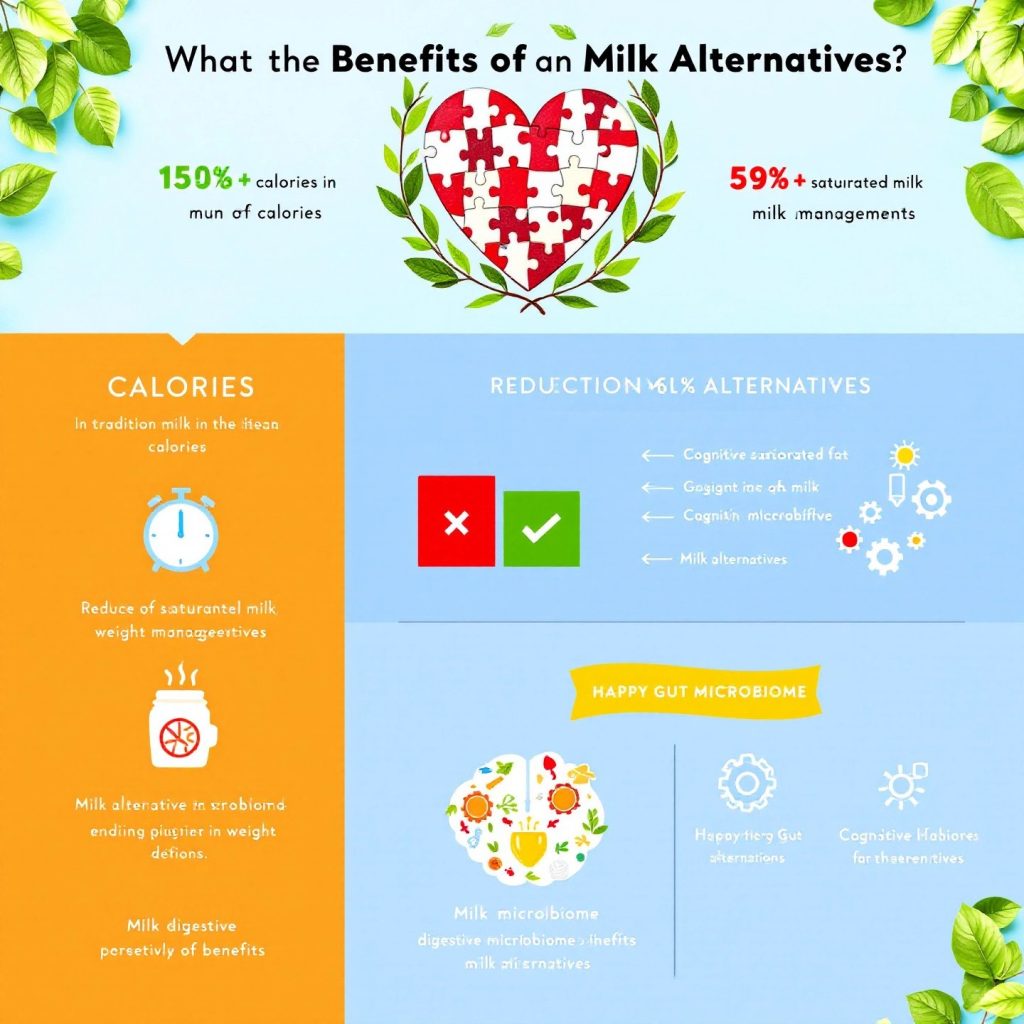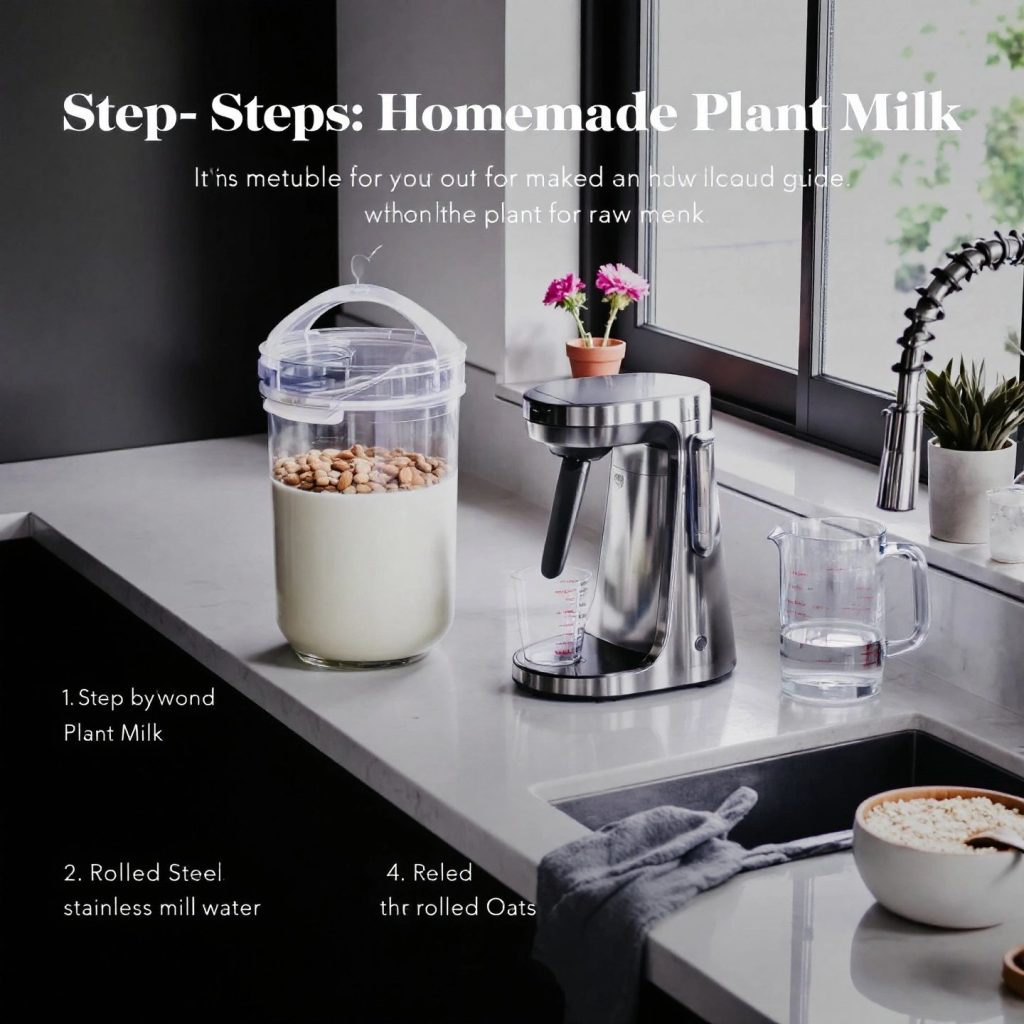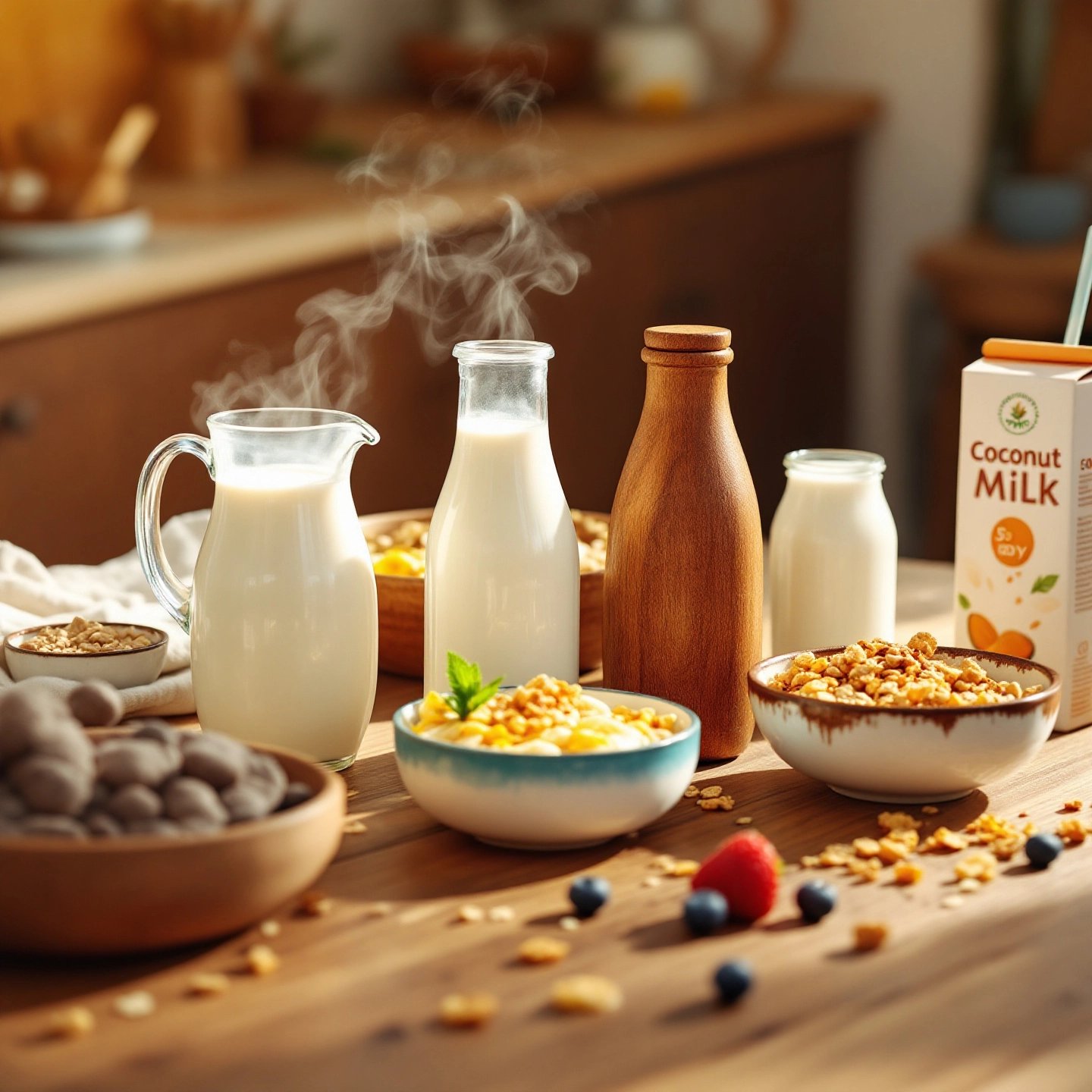Introduction: Why Consider Milk Alternatives for Cereal?
In recent years, the breakfast table has seen a shift from traditional dairy milk to a variety of non-dairy milk alternatives for cereal. This trend is driven by a combination of dietary preferences, lactose intolerance, and increasing environmental awareness. As consumers become more health-conscious and environmentally responsible, the demand for alternatives like oat, almond, soy, and coconut milk has surged.
The rise in popularity of milk alternatives for cereal is not just a fleeting trend but a reflection of changing consumer values. Many individuals are choosing non-dairy milk for cereal due to lactose intolerance, which affects a significant portion of the global population. According to studies, more than two-thirds of adults worldwide are lactose intolerant, making traditional dairy milk a less appealing option for many.
Moreover, the environmental impact of dairy farming has led to a growing interest in plant-based options. Producing plant-based milk requires significantly less water and land compared to dairy milk, and it results in lower greenhouse gas emissions. As noted by experts, switching to plant-based milk can reduce your carbon footprint, aligning with a more sustainable lifestyle.
Exploring different milk alternatives not only caters to dietary needs and environmental concerns but also enhances the culinary experience. Each type of non-dairy milk brings unique flavors and textures to your cereal, allowing for a personalized breakfast experience. Whether you prefer the creamy consistency of oat milk or the nutty undertones of almond milk, there is a non-dairy milk for cereal that can perfectly complement your morning routine.

Compare the nutritional benefits of popular milk alternatives for cereal (AI-generated)
Top Milk Alternatives for Cereal
The quest for the best milk alternative for cereal brings us to a variety of options, each with its unique flavors, textures, and nutritional profiles. Whether you’re lactose intolerant, vegan, or simply exploring new tastes, these alternatives can enhance your breakfast experience.
Oat Milk: Creamy and Versatile
Oat milk has rapidly gained popularity as a top choice for cereal enthusiasts. Known for its creamy texture and subtle sweetness, oat milk pairs excellently with a wide range of cereals. It is also a great source of dietary fiber, making it a heart-healthy option. Nutritionally, oat milk offers about 120 calories per cup, with 3 grams of protein and 2 grams of fiber, providing a satisfying start to your day (GoodRx).
Almond Milk: Nutty and Low-Calorie
Almond milk is a staple in the non-dairy milk category, appreciated for its light, nutty flavor and low-calorie content. With approximately 39 calories per cup and 1 gram of protein, almond milk is a suitable choice for those watching their calorie intake. It’s also rich in vitamin E, an antioxidant that supports skin health. However, it contains less protein than other milk alternatives, so pairing it with a protein-rich cereal might be beneficial (The Healthy Toast).
Soy Milk: Protein-Rich and Balanced
Soy milk stands out as a protein-rich alternative, offering about 6 grams of protein per cup, comparable to cow’s milk. This makes it an excellent option for those seeking to maintain muscle mass or looking for a more filling breakfast. For an easy, protein-packed meal, try having cereal with soymilk and enjoy the benefits of both taste and nutrition. Soy milk’s mild flavor complements many cereal types, and it is often fortified with calcium and vitamin D, enhancing its nutritional value.
Coconut Milk: Tropical and Light
Coconut milk provides a distinctive tropical flavor and is perfect for those who enjoy a hint of coconut in their breakfast. It is lower in calories, with about 46 calories per cup, and contains no protein, making it a lighter choice. Coconut milk’s creamy texture can add a luxurious feel to your cereal, but it may not be as satiating as other options due to its lower protein content.
Choosing the best milk alternative for cereal ultimately depends on personal preferences and dietary needs. Whether you prioritize protein, flavor, or calorie count, there’s a plant-based milk that can complement your cereal perfectly. As you continue to explore these options, remember that each milk alternative brings its own unique benefits to the table, enhancing both the taste and nutritional profile of your breakfast.
Choosing the Best Non-Dairy Milk for Cereal
Finding the best non-dairy milk for cereal involves a careful balance of taste, nutritional content, and how well it pairs with your favorite cereal flavors. With a plethora of options available, understanding the nuances of each can help elevate your breakfast experience.
Consider Taste Preferences
The flavor profile of non-dairy milk is a critical factor when choosing the best option for your cereal. For those who enjoy a creamy texture with a mild sweetness, oat milk is often considered the best tasting milk alternative for cereal. Its richness can enhance cereals with grains and nuts, providing a wholesome start to your day. Almond milk, with its subtle nutty undertones, pairs beautifully with fruit-based cereals, adding a refreshing twist to each spoonful.
Evaluate Nutritional Content
Nutritional content varies significantly among non-dairy milk alternatives. If protein intake is a priority, soy milk is an excellent choice, offering a similar protein content to cow’s milk. This makes it ideal for cereals that may lack protein, ensuring a balanced meal. Conversely, if you are looking for a low-calorie option, almond milk provides a lighter alternative, though it is lower in protein.
Match with Cereal Types
Compatibility with different cereal types is another key consideration. Coconut milk, with its tropical flavor, complements cereals containing dried fruits or chocolate, adding a unique taste dimension. Meanwhile, soy milk’s neutral flavor makes it versatile, pairing well with both sweet and savory cereals.
Ultimately, the best non-dairy milk for cereal is one that aligns with your taste preferences and dietary goals. Experimenting with different combinations can unveil new flavors and textures, enhancing your breakfast routine. As you explore these alternatives, remember that each offers distinct benefits, allowing you to tailor your cereal experience to meet your nutritional needs and flavor desires.

Discover the health benefits of choosing plant-based milk alternatives (AI-generated)
Health Benefits of Milk Alternatives
As consumers increasingly seek healthier lifestyles, the health benefits of milk alternatives have become a significant consideration. These plant-based options not only cater to dietary restrictions but also offer several nutritional advantages over traditional dairy milk.
Lower Calorie Content
One of the primary benefits of switching to milk alternatives is their lower calorie content. For instance, almond milk contains as few as 30-45 calories per cup, significantly less than whole cow’s milk, which has around 150 calories per cup. This makes almond milk an excellent choice for those looking to reduce calorie intake without sacrificing taste. Similarly, unsweetened coconut and cashew milk also provide low-calorie options, supporting weight management goals (Cleveland Clinic).
Reduced Saturated Fats
Many milk alternatives are lower in saturated fats compared to cow’s milk. For example, oat milk and soy milk contain significantly less saturated fat, which is beneficial for heart health. Reducing saturated fat intake can help lower cholesterol levels and decrease the risk of cardiovascular diseases, making these options attractive for health-conscious individuals (UCLA Health).
Potential Allergy Benefits
For those with lactose intolerance or dairy allergies, milk alternatives offer a welcome relief. Options like almond, soy, and oat milk are naturally lactose-free, providing a safe and delicious way to enjoy cereal without digestive discomfort. Moreover, these alternatives are often fortified with essential nutrients like calcium and vitamin D, ensuring that dietary needs are met without dairy.
Incorporating healthy milk alternatives for cereal into your diet can significantly contribute to a balanced and nutritious meal plan. Whether you’re aiming to cut down on calories, reduce fat intake, or manage allergies, these plant-based milk options offer versatile and healthful solutions. As you continue to explore different milk alternatives, you’ll discover the diverse benefits they bring, aligning with both your health objectives and taste preferences.
Sustainability and Environmental Impact of Milk Alternatives
In the pursuit of a more sustainable lifestyle, many consumers are turning to milk alternatives not just for health benefits, but also for their reduced environmental impact. Traditional dairy milk production is resource-intensive, contributing significantly to greenhouse gas emissions, land use, and water consumption. In contrast, plant-based milk alternatives offer a more eco-friendly choice, aligning with efforts to reduce the carbon footprint and conserve precious natural resources.
Reduced Greenhouse Gas Emissions
One of the most compelling reasons to switch to plant-based milk is its lower greenhouse gas emissions. Dairy milk production is known to generate approximately three times more greenhouse gases than its plant-based counterparts. According to Our World in Data, this significant reduction is a key factor for environmentally conscious consumers looking to minimize their impact on climate change.
Efficient Land and Water Use
Plant-based milks also excel in terms of land and water efficiency. Dairy farming requires substantial land, often leading to deforestation and habitat loss. In comparison, alternatives like oat and soy milk use significantly less land. For instance, almond milk, despite its high water usage, still demands less land than dairy milk. Oat milk stands out as one of the most water-efficient options, using considerably less water than both dairy and other plant-based milks (Bastyr University).
Choosing the Right Plant-Based Milk
While all plant-based milks offer environmental benefits over dairy, each has its own ecological footprint. Almond milk, for example, has a significant water footprint, whereas soy milk is associated with deforestation concerns, particularly in the Amazon. Choosing organic or locally sourced options can mitigate some of these impacts, making your choice even more environmentally friendly. Ultimately, selecting a milk alternative that aligns with your environmental values is crucial for maximizing sustainability efforts.
Incorporating sustainable milk alternatives into your diet not only supports personal health goals but also contributes positively to the planet. By understanding the environmental impact of each option, you can make informed decisions that support a greener future. As we continue to explore the benefits of milk alternatives, the next chapter will delve into the convenience and eco-friendliness of making plant milk at home.

Learn how to make your own plant milk at home for a sustainable choice (AI-generated)
DIY Plant Milk: A Convenient and Eco-Friendly Option
With the rising popularity of plant-based diets, making your own plant milk at home has become an attractive option for those seeking to reduce their environmental footprint and enjoy fresh, customizable milk alternatives. DIY plant milk offers several advantages, including the ability to tailor flavors and ingredients to suit personal preferences, all while being cost-effective and reducing packaging waste.
Benefits of Homemade Milk Alternatives
Creating homemade milk alternatives allows you to have full control over the ingredients, ensuring a pure and fresh product free from additives and preservatives commonly found in store-bought versions. This not only enhances the flavor but also provides a healthier option for those mindful of their dietary intake. Additionally, making your own milk can be more economical in the long run, especially if you frequently consume plant-based milk. By purchasing nuts, seeds, or grains in bulk, you can significantly cut down on costs while enjoying a premium product.
Customization and Versatility
One of the most appealing aspects of DIY plant milk is the ability to customize your milk to your liking. Whether you prefer a hint of vanilla, a touch of sweetness from dates, or a dash of cinnamon, homemade milk alternatives allow for endless flavor possibilities. This versatility makes it easy to experiment and find the perfect blend that complements your cereal perfectly. Moreover, you can adjust the creaminess and thickness by altering the nut-to-water ratio, tailoring the texture to suit different cereal types.
Using a Plant Milk Maker
While traditional methods of making plant milk involve soaking, blending, and straining, a plant milk maker can streamline the process, making it accessible even for those with busy schedules. These devices simplify the procedure, allowing you to create fresh milk with minimal effort and mess. As highlighted in recent reviews, plant milk makers offer convenience and efficiency, making them a worthwhile investment for regular plant milk consumers. They help reduce the environmental impact by minimizing packaging waste and ensuring you always have fresh milk on hand.
For those interested in exploring the best options available, consider checking out the top plant milk makers of 2025. These devices offer a range of features that cater to different needs, providing a convenient and eco-friendly solution for homemade plant-based milk enthusiasts.
By making your own plant milk, you not only enjoy the benefits of a healthier, more personalized product but also contribute to sustainable living practices. As you experiment with DIY plant milk, you’ll discover the joy of crafting a beverage that perfectly complements your cereal and aligns with your lifestyle goals.
Conclusion: Embrace Milk Alternatives for a Healthier Lifestyle
Incorporating milk alternatives into your cereal routine is more than just a dietary choice; it’s a step towards a healthier and more sustainable lifestyle. With the wide array of plant-based options available, from creamy oat milk to nutty almond milk, you have the opportunity to tailor your breakfast to fit your nutritional needs and taste preferences. These milk alternatives not only cater to lactose-intolerant individuals but also offer lower calorie content and reduced saturated fats, contributing to better heart health and weight management.
Experimenting with different milk alternatives allows you to discover the best plant milk for cereal that complements your favorite flavors and textures. Whether you prefer the protein-rich profile of soy milk or the tropical hint of coconut milk, each option brings unique benefits to your breakfast table. Moreover, by choosing plant-based milks, you are supporting a more sustainable food system, as these alternatives typically have a smaller carbon footprint and use fewer natural resources compared to traditional dairy milk.
As you explore these options, consider the convenience and customization potential of making plant milk at home. This not only reduces packaging waste but also ensures you have fresh, additive-free milk tailored to your liking. For those interested in simplifying the process, investing in a plant milk maker can be an excellent choice, offering a quick and efficient way to enjoy homemade milk alternatives. To find the best device for your needs, explore the top plant milk makers of 2025.
Ultimately, embracing milk alternatives for cereal is about enhancing your lifestyle with healthier, more sustainable choices. As you integrate these options into your daily routine, you’ll not only enjoy a delicious and nutritious breakfast but also contribute positively to your well-being and the environment. If you prefer a protein-rich option, cereal with soymilk can be a satisfying choice that supports muscle maintenance and overall well-being. So, why not start experimenting today and discover the perfect plant-based milk that suits your cereal and lifestyle?
Frequently Asked Questions
1. Is there a substitute for milk in cereal?
Yes, there are many substitutes for milk in cereal, such as soy, almond, oat, and coconut milk. These alternatives offer various flavors and nutritional benefits, catering to those with dietary restrictions or preferences.
2. How can I eat cereal without milk?
You can enjoy cereal without milk by using options like smoothies, yogurt, or plant-based milks. These alternatives provide different textures and flavors, enhancing the cereal experience.
3. Can you eat cereal with water instead of milk?
Yes, you can use water with cereal, but it changes the texture, often making it soggier. For a richer experience, plant-based milks are recommended as they offer flavor and nutritional benefits.
4. What is a milk substitute that tastes like milk?
Soy milk is often praised for its creamy texture and mild flavor, closely resembling cow’s milk. It’s a popular choice for those seeking a similar taste and nutritional profile.
5. What are the environmental benefits of milk alternatives?
Milk alternatives like oat and almond milk have lower greenhouse gas emissions and use less land and water compared to dairy milk, making them more sustainable choices.
